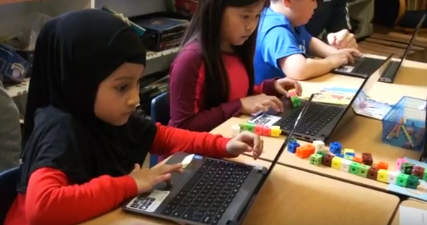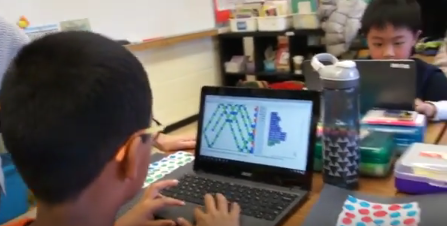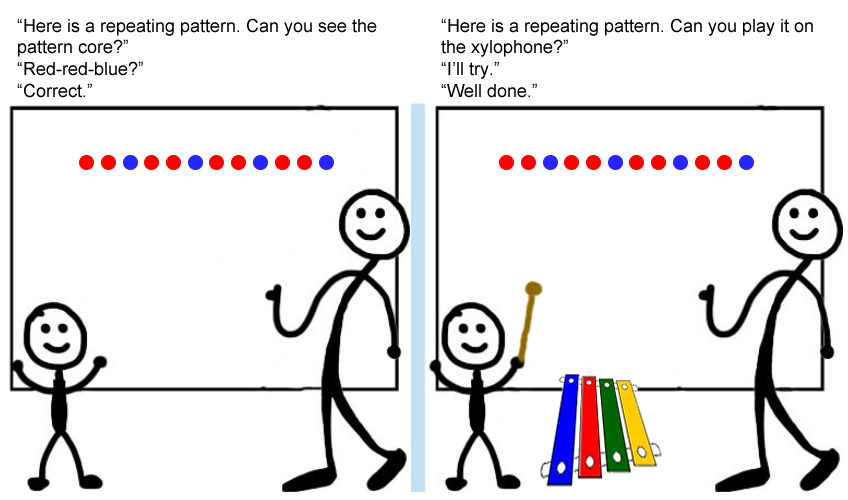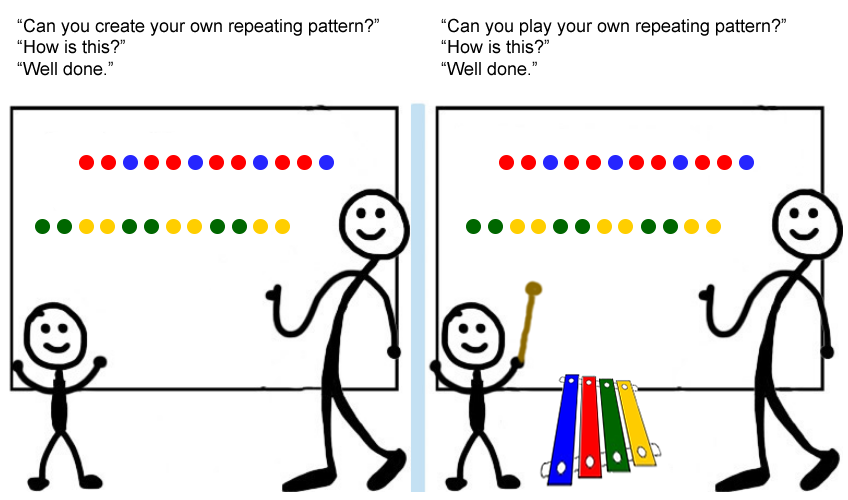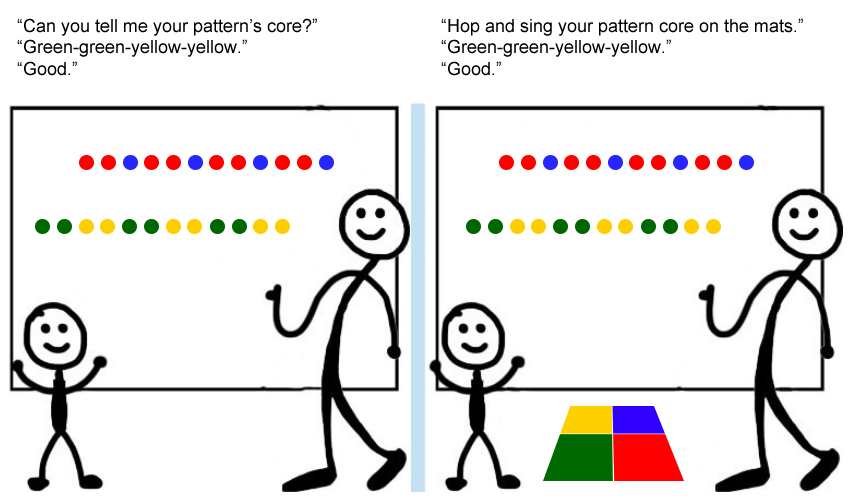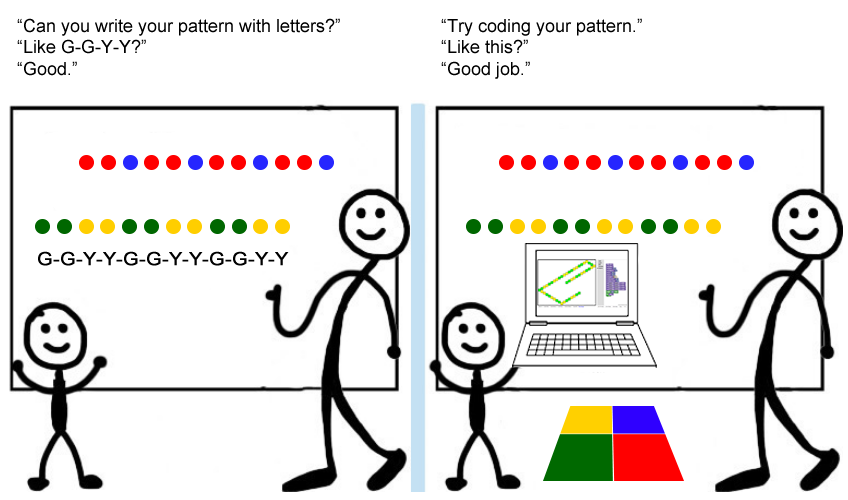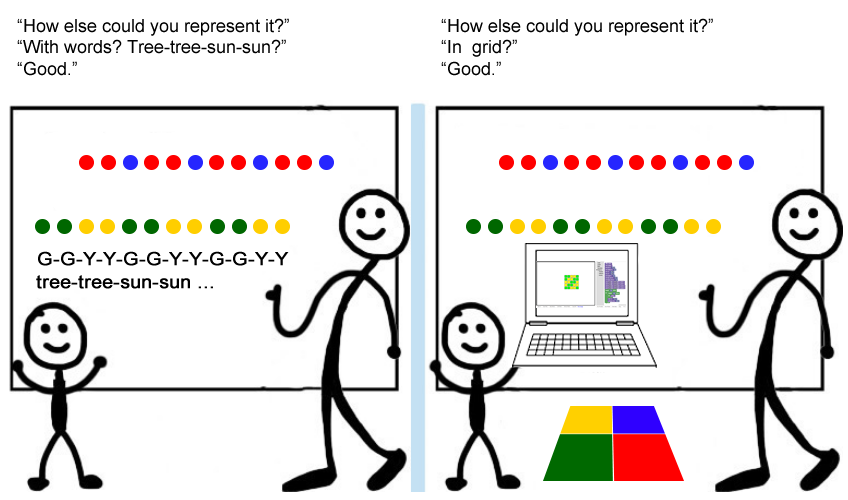New blog post: Digital Coding and CT at St Andrews PS (TDSB)
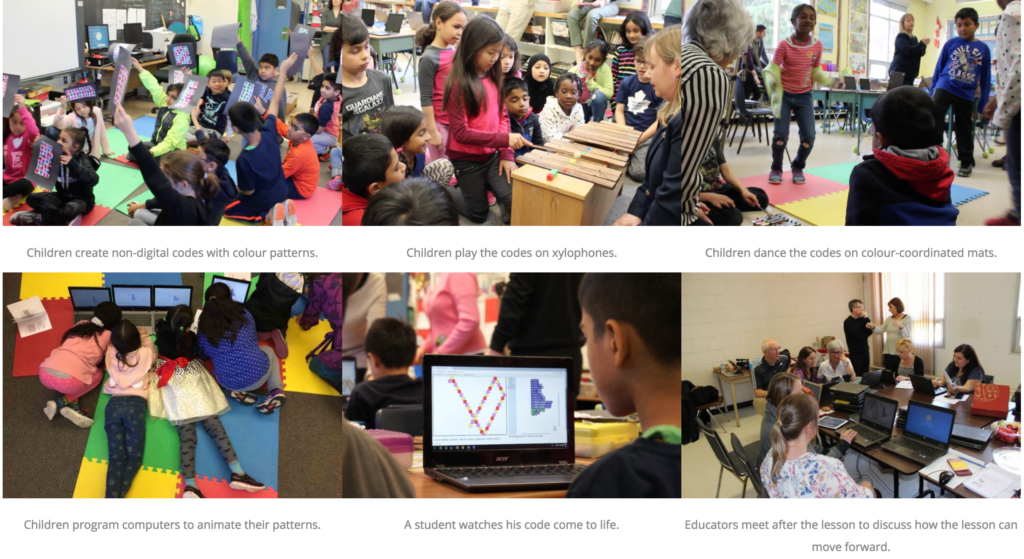 The repeating patterns activity was created in response to a Kindergarten teachers asking: “Do you have any ideas for teaching AB patterns?”
The repeating patterns activity was created in response to a Kindergarten teachers asking: “Do you have any ideas for teaching AB patterns?”
- Read the MKN White Paper: Computational Modelling in Elementary Mathematics Education
- See the documentary at researchideas.ca/wmt/c2a1.html.
- Developing a coding environment that allows children to create repeating patterns and sounds
- Conducting a lesson study, facilitated by Bev Caswell and Joan Moss of The Robertson Program
- Creating a classroom documentary, by Ricardo Scucuglia of UNESP, Brazil
Lesson Study on Repeating Patterns in Grades 1/2 – Leslee Minniti’s class, St. Andrews PS, TDSB
See the coding environment for this lesson.
Use the tabs above to see this lesson in Grades 2/3 and to see a Side-by-Side. Also see work with repeating patterns for Grades 1/2 in Brazil.
Lesson design by Iain Brodie, George Gadanidis, Leslee Minniti and Bronna Silver. Lesson study process by Bev Casswell and Joan Moss. Coding environment by George Gadanidis and Chris Yiu.
1. Reviewing patterns.
2. Multiple representations of repeating patterns.
3. Student explorations of repeating patterns.
4. After recess – whole class.
5. Repeating patterns that bounce, with code – whole class.
6. Students building repeating patterns with code.
7. Building multiple repeating patterns at once, with code.
8. Classroom teacher reflections.
9. Unanticipated learning opportunities.
10. Discussion about technology – part 1.
11. Discussion about technology – part 2.
12. Trying it in your classroom.
Lesson Study on Repeating Patterns in Grades 2/3 – Bronna Silver’s class, St. Andrews PS, TDSB
See the coding environment for this lesson.
Use the tabs above to see this lesson in Grades 1/2 and to see a Side-by-Side. Also see work with repeating patterns for Grades 1/2 in Brazil.
Lesson design by Iain Brodie, George Gadanidis, Leslee Minniti and Bronna Silver. Lesson study process by Bev Casswell and Joan Moss. Coding environment by George Gadanidis and Chris Yiu.
1. Building a repeating pattern. Prior to this, the teacher asked students to share what they knew about patterns. They shared that they repeat and that some may grow or shrink.
2. Playing a repeating pattern. A song on a xylophone. A dance on colour mats.
3. Cutting the pattern. What would happen if we cut the pattern at regular intervals, as would happen if we stamped the pattern the way we write on a page?
4. Hands-on repeating patterns. Students make their own repeating patterns.
5. What did you discover? Students share what they discovered and what they learned.
6. Coding demo. Using a coding environment to build repeating patterns.
7. Students coding repeating patterns. Students use coding environment to build math art with repeating patterns.
8. Initial thoughts on the lesson.
9. Observations on the lesson.
10. The role of coding.
11. Student panel.
Repeating patterns with colour, sound and a coding simulation: Grades 1/2 in Brazil
Dr. Ricardo Scucuglia and Grades 5 students at Maria Peregrina school, in Brazil, work with repeating patterns.
Dr. Ricardo Scucuglia and Grades 1/2 students at Maria Peregrina school, in Brazil, work with repeating patterns.
SIDE-BY-SIDE?
Below is a lesson sequence on Repeating Patterns using 2 different pedagogical approaches, shown side-by-side:
- the pedagogical approach on the left is fairly typical
- the pedagogical approach on the right offers a mathematical surprise
The intent is not to pick one approach over another, but to see that both approaches are of some value.
- Use the tabs above to see the lesson study in Grades 1/2 and Grades 2/3
- Also see work with repeating patterns for Grades 1/2 in Brazil.
- and the coding environment .
Try these ideas in your classroom.
How do students react differently to each pedagogical approach?
We’d love to hear your feedback. Please send comments to George Gadanidis at ggadanid@uwo.ca
REPEATING PATTERNS SIDE-BY-SIDE

